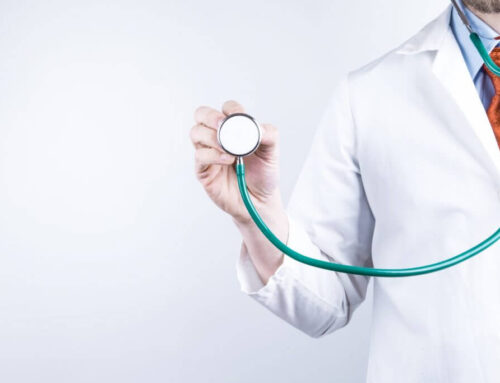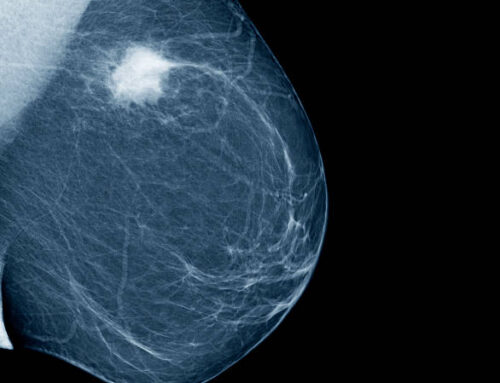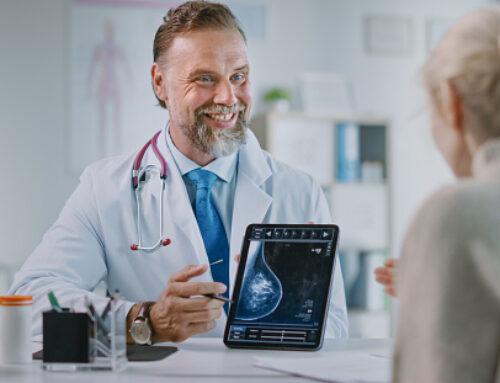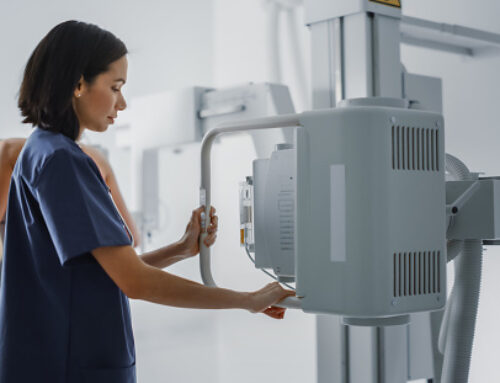. What is Mammography?
Mammography is low dose X-ray imaging of the breast. The X-ray image of the breast is called as Mammogram. The mammogram is studied by the Radiologists & also by the Oncologist for any the presence of cancer and other abnormalities of breast, such as, cysts, benign tumours, calcification, etc.
2. Do I need a doctor’s prescription for Mammography?
It is not mandatory to have doctor’s prescription for Mammogram. However it is important to consult the doctor prior to the mammogram. The specialist (surgeon/oncologist) can perform clinical breast examination before recommending mammography. Some international guidelines recommend yearly mammography for females more than 40 years of age. You should talk to your doctor in detail about the need of mammography for yourself and the benefits & harm of the same.
3. I have not noticed any swelling/lump in my breast. Should I still go for Mammography?
Screening Mammography is recommended as a screening test to look for Breast Cancer findings even before symptoms appear. It helps to detect the disease at early stages, even at precancerous stage, for best treatment outcomes. You can go for mammography after the age of 40 years old, especially if you have risk factors. You should talk to your doctor in detail about the need of mammography for yourself and the benefits & harm of the same.
4. Who performs Mammography?
Trained technicians perform mammography. The radiologists or oncologists read the mammogram for abnormal findings.
5. Do I need to get admitted for Mammography?
Screening Mammography is OPD based procedure, of less than 5 minutes. There is no need to get admitted for this test.
6. Is it painful?
It is not a painful procedure at all. It is a non-invasive test performed similar to the X-ray of Chest.
7. Does Mammography spread Cancer?
This is a myth. Mammography uses low dose X-rays, which do not cause cancer to spread. You should talk to your doctor in detail about the need for this test for yourself – both benefits and harmful effects.
8. What should I write in my checklist before I go for Mammography?
You don’t need to be empty stomach before going for the test. After you reach the Radiology centre, you will be given an outfit to wear. Bra should be removed before the test.
9. What is the difference between Screening & Diagnostic Mammography?
In screening mammography, single image of X-ray needs to be taken. Diagnostic mammography needs multiple X-ray images from different angles. It also takes more time than screening mammography.
What is the main objective of Mammography ?
The objective of mammography is the early discovery of breast cancer, ordinarily through recognition of trademark masses or microcalcifications.
Why Mammogram is done?
Mammography is X-ray imaging of individual breast intended to identify tumours and different variations from the norm. Mammography can be utilized either for screening or for diagnostic purposes in assessing a breast irregularity:
Screening mammography: Screening mammography is utilized to identify breast changes in ladies who have no signs or side effects or new breast variations from the norm. The objective is to recognize cancer before clinical signs are perceptible.
Diagnostic mammography: Diagnostic mammography is utilized to research breast cancer changes, for example, another breast irregularity, breast torment, an unusual skin appearance, nipple thickening or areola release. It’s likewise used to assess irregular discoveries on a screening mammogram. A diagnostic mammogram incorporates extra mammogram pictures.
How is a mammogram done?
An individual will stand before an X-ray machine. A technologist will put your breast on a reasonable plastic plate. Another plate will solidly press your breast from above. The plates will level the breast, keeping it still while the X-beam is being taken.
An individual will feel some weight. The means are rehashed to make a side perspective on the breast. The other breast will be X-rayed similarly. An individual will at that point pause while the technologist checks the four X-beams to ensure the photos don’t should be re-done.
Remember that the technologist can’t disclose to anyone the aftereffects of your mammogram. Every lady’s mammogram may look somewhat changed on the grounds that all breast is somewhat extraordinary.
Which age women should start doing her Mammogram test?
Ladies at normal risk for breast cancer ought to get yearly mammograms beginning at age 45, at that point each other year beginning at age 55. The specialists additionally recommends ladies could decide to have mammograms as ahead of schedule as at the age 40.
Advantages of Mammography-
-
- Reduces the danger of passing on from breast cancer. Of 1,000 ladies who have a mammogram like every 2 years for 20 years, 7 deaths are prevented.
- Reduces the danger of experiencing chemotherapy. Screening frequently takes into account the recognition of diseases at the beginning phase of improvement.
- Allows ladies to know the health of their breast.
Significant Things Individuals should Know About Mammograms-
- Mammograms can save individual life: Discovering breast cancer early decreases women danger of dying from the sickness by 25-30% or more. Ladies should start having mammograms yearly at age 40, or prior on the off chance that they’re at high risk.
- Try not to be apprehensive: Mammography is a quick methodology for around 20 minutes, and distress is insignificant for most ladies. The technique is protected: there’s just a small measure of radiation presentation from a mammogram. To assuage the tension of sitting tight for results, attempt to go to a centre that will give you results before you leave.
- Get the best quality: If an individual has dense breast or are under age 50, attempt to get an advanced mammogram. An advanced mammogram is recorded onto a PC with the goal that specialists can extend certain segments to take a gander at them all the more intently.
- Try not to wear antiperspirant or deo to your mammogram since these can appear in the film and meddle with the test outcomes.
- Mammography is our most remarkable breast cancer recognition instrument: However, mammograms can at present miss 20% of breast cancer that is essentially not obvious utilizing this strategy. Other significant devices, for example, breast self-test, clinical breast exam, and potentially ultrasound or MRI can and ought to be utilized as reciprocal devices, however, there are no substitutes or swaps for a mammogram.





